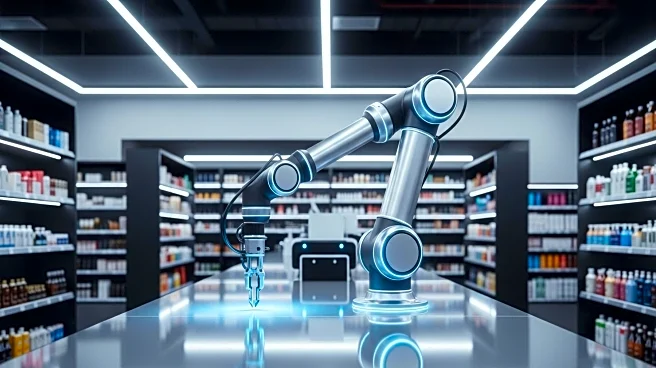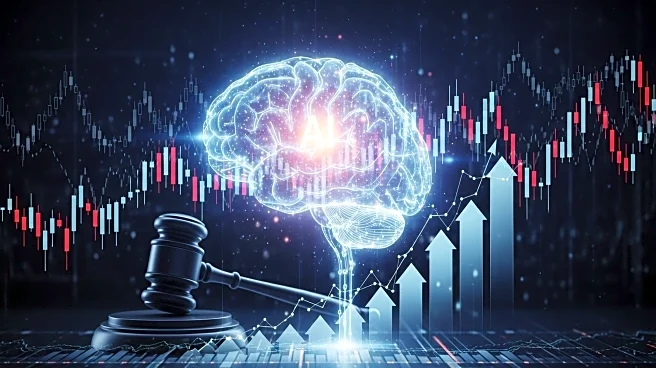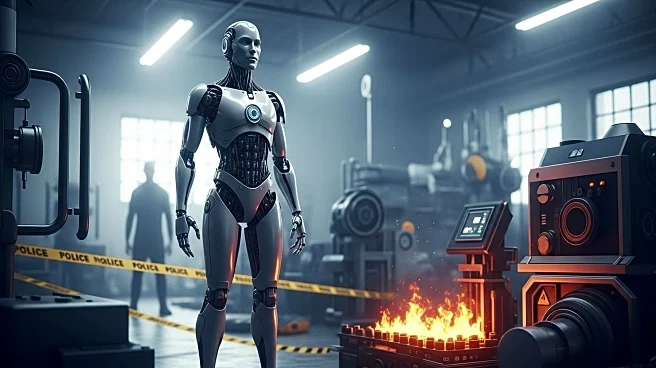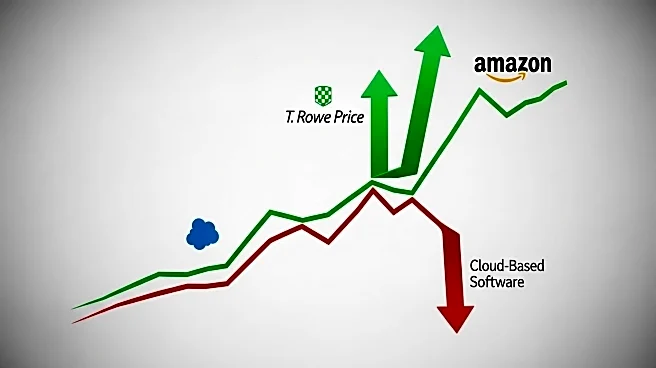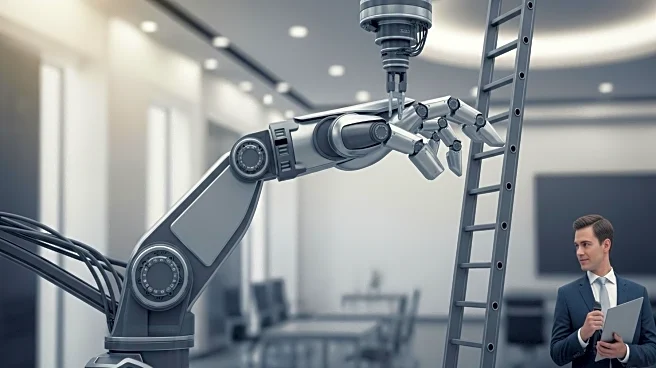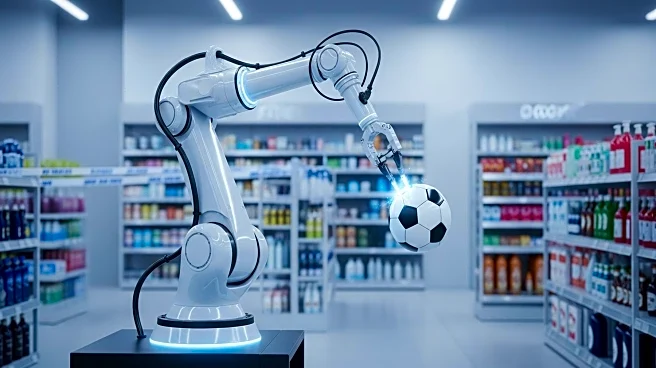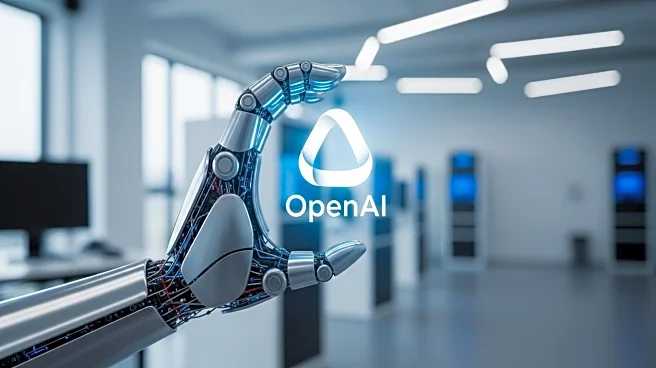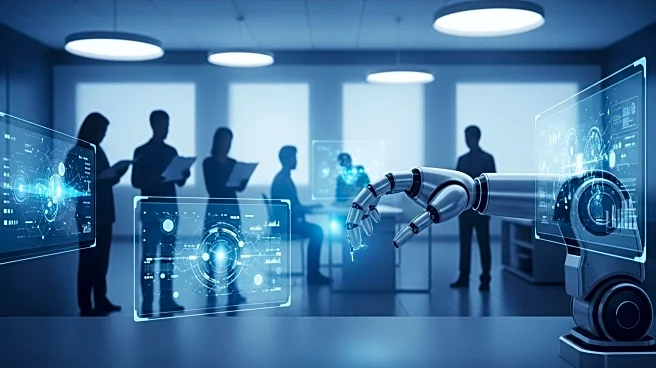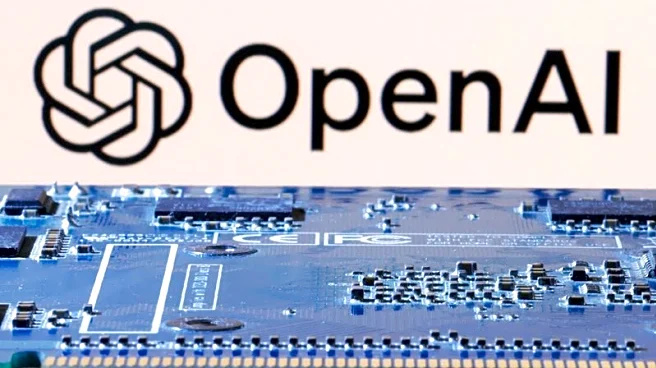What is the story about?
What's Happening?
Walmart is leveraging artificial intelligence (AI) and automation to transform its retail operations, significantly enhancing efficiency and customer experience. The company has implemented an AI-driven inventory management system that optimizes stock distribution and demand forecasting, reducing inventory costs by up to 30% and improving forecasting accuracy to 90%. This system allows for hyper-localized stock adjustments, such as stocking pool toys in sunny regions and sweaters in colder areas. Additionally, Walmart is investing $1 billion in employee training to integrate AI tools, creating new roles while cutting 1,500 corporate jobs. This approach aims to balance automation with workforce development, ensuring that AI enhances rather than replaces human capital.
Why It's Important?
Walmart's strategic use of AI positions it as a leader in the retail industry, outpacing competitors like Amazon and Costco. The company's focus on AI-driven efficiency is translating into tangible financial results, with a 27% increase in global e-commerce sales and a 5.07% year-over-year revenue increase, reaching $680.99 billion for FY 2025. By integrating AI with employee development, Walmart is mitigating job displacement risks and fostering workforce loyalty. This dual strategy not only enhances operational efficiency but also strengthens Walmart's competitive edge, making it a compelling investment opportunity in the AI-driven retail landscape.
What's Next?
Walmart plans to continue its investment in AI and employee training through 2026, further integrating AI tools into its operations. The company aims to expand its AI-enhanced delivery network, which currently covers 93% of U.S. households, and enhance its Walmart+ subscription service. As Walmart continues to innovate, it is likely to maintain its competitive advantage over rivals, potentially influencing other retailers to adopt similar AI-driven strategies. The ongoing development of AI tools and training programs will be crucial in ensuring that Walmart's workforce remains adaptable and skilled in the evolving retail environment.
Beyond the Headlines
Walmart's AI transformation highlights the broader implications of technology in the retail sector, including ethical considerations around job displacement and the need for workforce reskilling. The company's approach demonstrates a commitment to using AI as a tool to enhance human capabilities rather than replace them, setting a precedent for responsible AI integration in business operations. This development may prompt discussions on the role of AI in shaping the future of work and the importance of balancing technological advancement with human capital investment.
AI Generated Content
Do you find this article useful?
